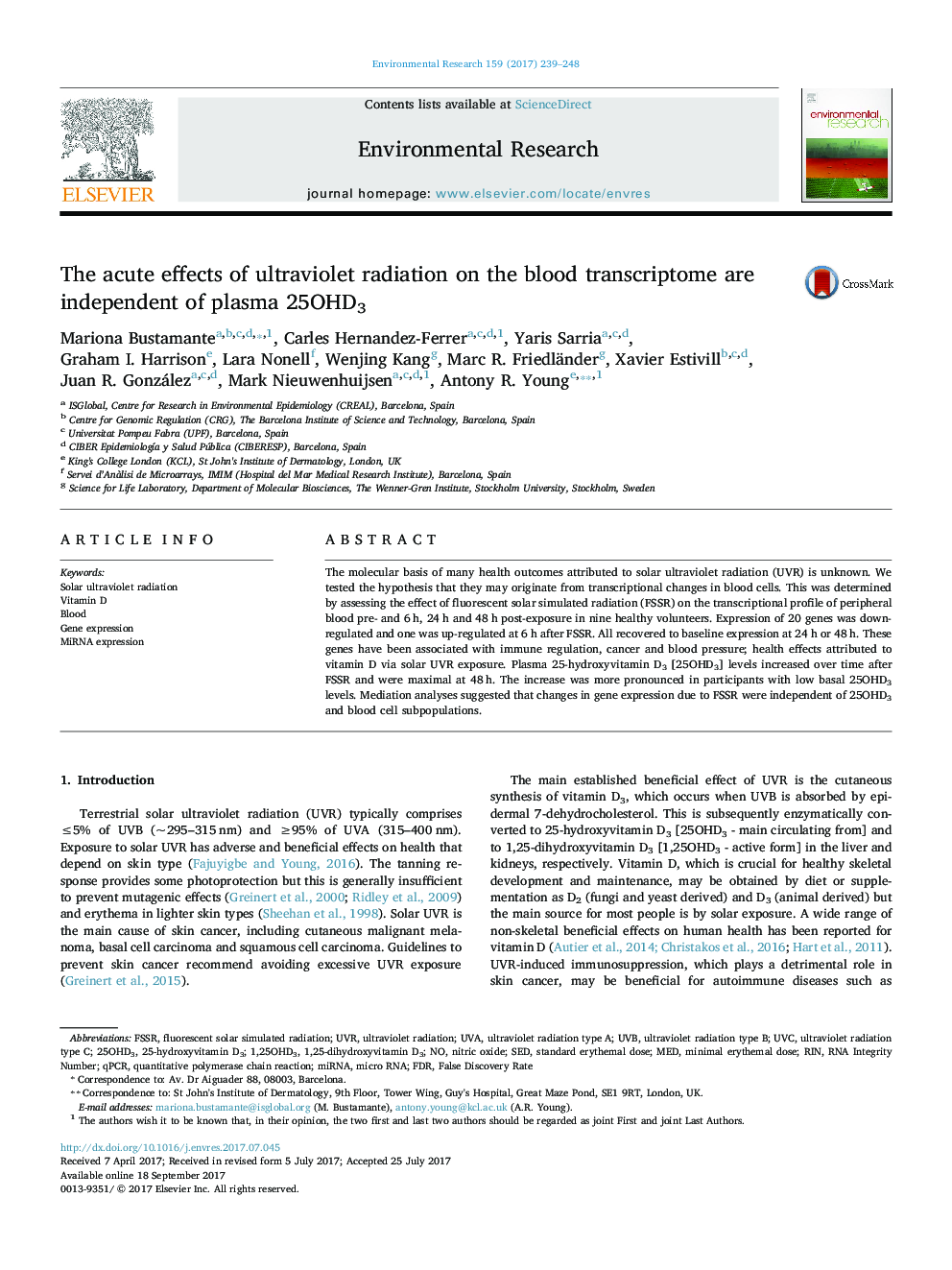| Article ID | Journal | Published Year | Pages | File Type |
|---|---|---|---|---|
| 5756107 | Environmental Research | 2017 | 10 Pages |
Abstract
The molecular basis of many health outcomes attributed to solar ultraviolet radiation (UVR) is unknown. We tested the hypothesis that they may originate from transcriptional changes in blood cells. This was determined by assessing the effect of fluorescent solar simulated radiation (FSSR) on the transcriptional profile of peripheral blood pre- and 6Â h, 24Â h and 48Â h post-exposure in nine healthy volunteers. Expression of 20 genes was down-regulated and one was up-regulated at 6Â h after FSSR. All recovered to baseline expression at 24Â h or 48Â h. These genes have been associated with immune regulation, cancer and blood pressure; health effects attributed to vitamin D via solar UVR exposure. Plasma 25-hydroxyvitamin D3 [25OHD3] levels increased over time after FSSR and were maximal at 48Â h. The increase was more pronounced in participants with low basal 25OHD3 levels. Mediation analyses suggested that changes in gene expression due to FSSR were independent of 25OHD3 and blood cell subpopulations.
Keywords
Related Topics
Life Sciences
Environmental Science
Health, Toxicology and Mutagenesis
Authors
Mariona Bustamante, Carles Hernandez-Ferrer, Yaris Sarria, Graham I. Harrison, Lara Nonell, Wenjing Kang, Marc R. Friedländer, Xavier Estivill, Juan R. González, Mark Nieuwenhuijsen, Antony R. Young,
